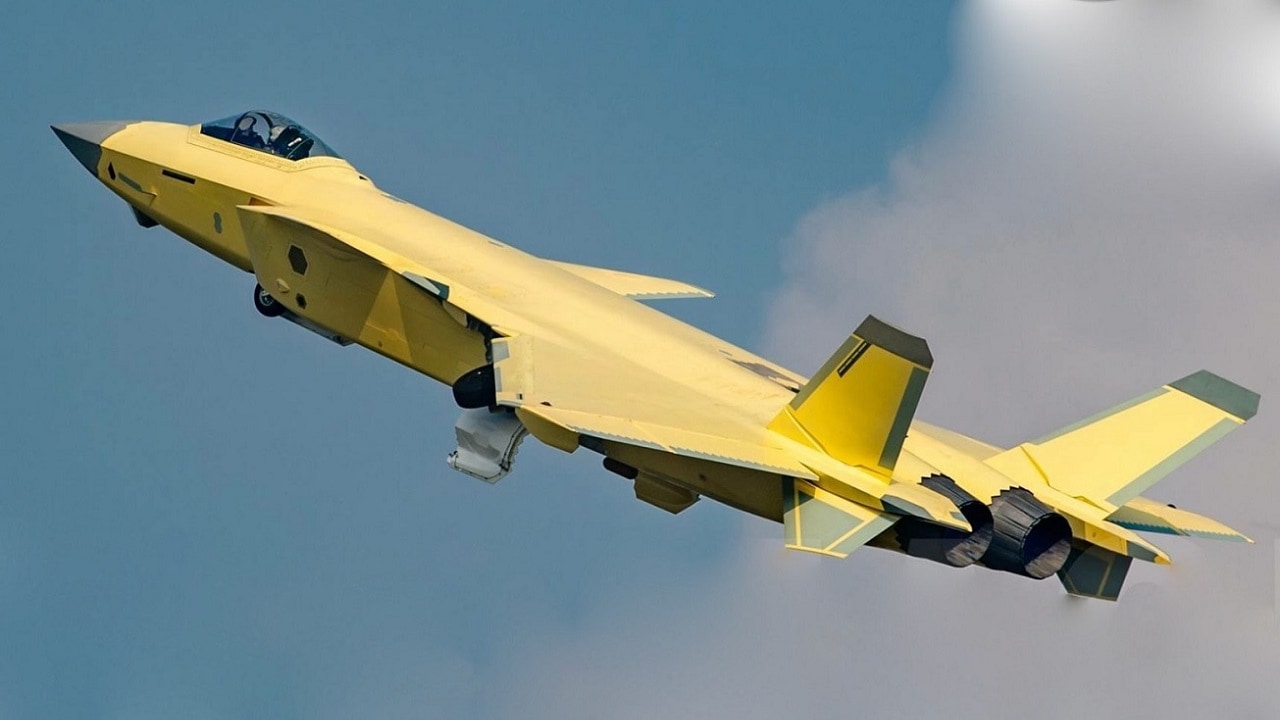Holy mackrel, I love it!Very low quality content! LOL.
I've never heard of inf.com but after reading this ridiculously written article, I know why.
You are using an out of date browser. It may not display this or other websites correctly.
You should upgrade or use an alternative browser.
You should upgrade or use an alternative browser.
J-20 5th Generation Fighter VII
- Thread starter siegecrossbow
- Start date
- Status
- Not open for further replies.
A side by side pic showing the physical difference between J-20 (I and II) and J-20A (WS-15) would be nice.
And the twin seater is J-20B not J-20S regardless of the of the engine? Well I'm guessing they will be taking the WS-15 if they haven't enter into production yet.
And the twin seater is J-20B not J-20S regardless of the of the engine? Well I'm guessing they will be taking the WS-15 if they haven't enter into production yet.
These pics are artists' impression only.A side by side pic showing the physical difference between J-20 (I and II) and J-20A (WS-15) would be nice.
And the twin seater is J-20B not J-20S regardless of the of the engine? Well I'm guessing they will be taking the WS-15 if they haven't enter into production yet.
J-20A

J-20

yeah.....?
so you were refering to?The Soloviev D-30 (now the Aviadvigatel PS-30) is a Soviet two-shaft low-bypass engine
...do you realize that every single turbofan engine (F119, WS-10, CFM-56) by defination can by refer as a bypass turbojet?
D
Deleted member 24822
Guest
I previously asked a question of whether we'd heard anything on the J-20A systems being retrofittable on J-20s. Would it be fair to say that Yankee's article implies that the J-20A shares some of the J-20B's new internal structures and processes, thus making it unlikely that J-20 airframes can be brought up to the J-20A variant without difficulty?...
2. Later batch J-20 is a completely different beast from their earlier brethern. Despite the fact that the early batch has received software updates, after mock combat engagement with the new variant, pilots of older J-20 lament that their aircraft is a bit of a technological laggard.
He's probably not aware of turbofans being essentially turbojets with a bypass stream, so he was a bit confused by the "bypass turbojet" description.yeah.....?
so you were refering to?
...do you realize that every single turbofan engine (F119, WS-10, CFM-56) by defination can by refer as a bypass turbojet?
Any comments on improved stealth the new airframe would offer?Excellent article by Yankee regarding the WS-15 flight that leaked a lot of interesting tidbits:
1. There are a lot of system redundancies on the J-20 to ensure that even if the plane has been damaged by enemy fire, it will retain limited ability to fly and fight. This makes maintenance of the earliest batch of J-20 very difficult. Later batches have significantly improved on this.
2. Later batch J-20 is a completely different beast from their earlier brethern. Despite the fact that the early batch has received software updates, after mock combat engagement with the new variant, pilots of older J-20 lament that their aircraft is a bit of a technological laggard.
3. J-20B (the twinseater) already incorporates most of the technologies used on J-20A, despite not having the target engine.
4. WS-15 will not only improve maneuverability and supersonic performance but also provide additional redundancies for onboard electronics, cooling system, and hydraulics.
5. Y-20 news -- one of Yankee's friends had the fortune of participating in a test mission on a Y-20 with WS-20 engines and claimed that he was able to get some good sleep onboard. Does this mean that the engine is a lot quieter?
Any comments on improved stealth the new airframe would offer?
Most of the improvements would not be visible to the naked eye, though we do know that the revised nose geometry offers some benefits to the previous one.
I previously asked a question of whether we'd heard anything on the J-20A systems being retrofittable on J-20s. Would it be fair to say that Yankee's article implies that the J-20A shares some of the J-20B's new internal structures and processes, thus making it unlikely that J-20 airframes can be brought up to the J-20A variant without difficulty?
Older J-20 probably can’t retrofit the same stuff that goes into J-20A but they’ve had at least two internal upgrades. See Yankee’s comments about differences between early AL-31 J-20 and WS-10C J-20.
D
Deleted member 24822
Guest
Thanks! My interest in this stems from trying to understand what happens to the early J-20s. Going off Scramble, I think the PLAAF sent several J-11 brigades the J-16 as replacements, so would it be fair to say that the brigades that currently have J-20s will probably get the J-20As and have their J-20s sent to other brigades?Older J-20 probably can’t retrofit the same stuff that goes into J-20A but they’ve had at least two internal upgrades. See Yankee’s comments about differences between early AL-31 J-20 and WS-10C J-20.
- Status
- Not open for further replies.
